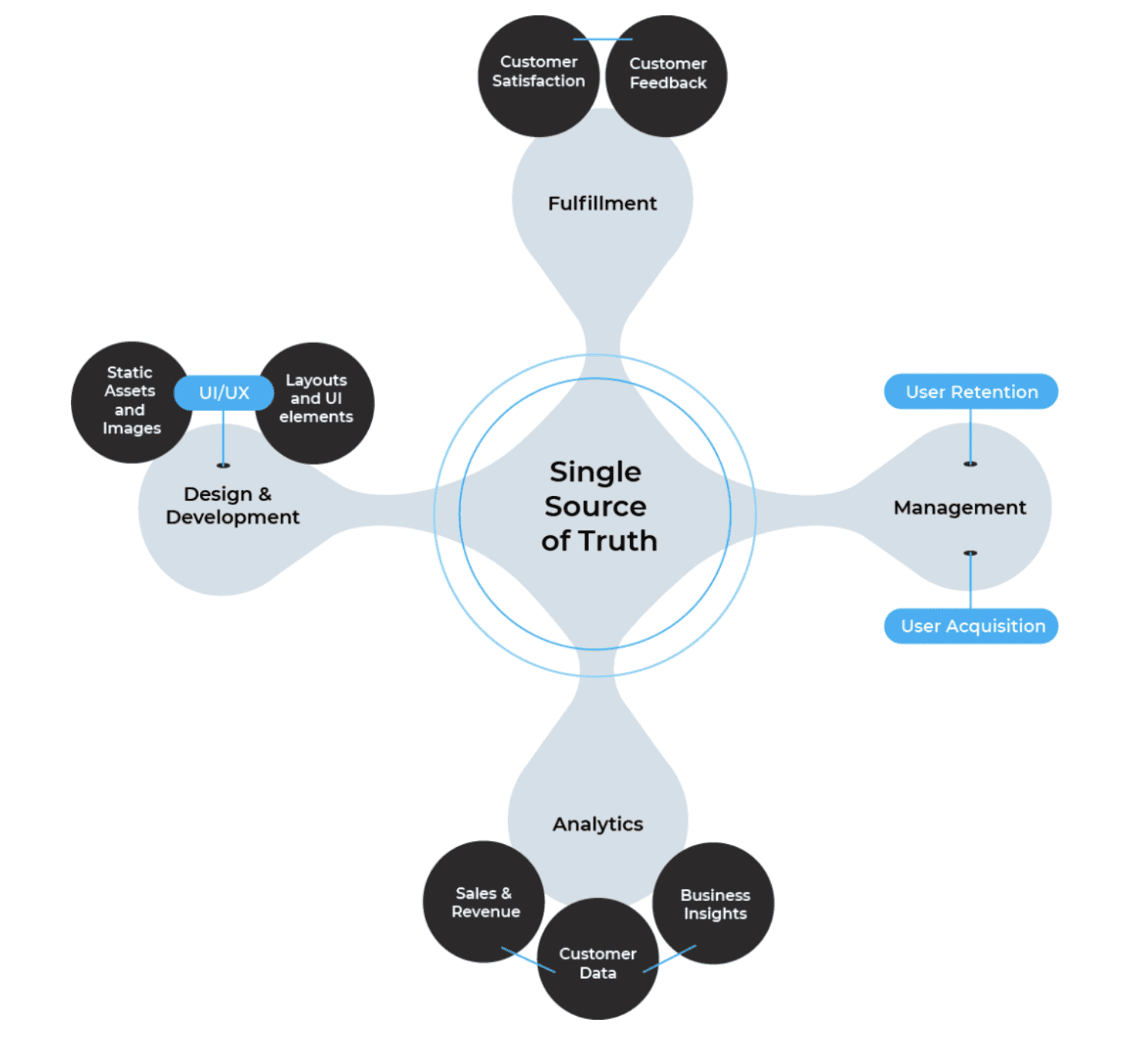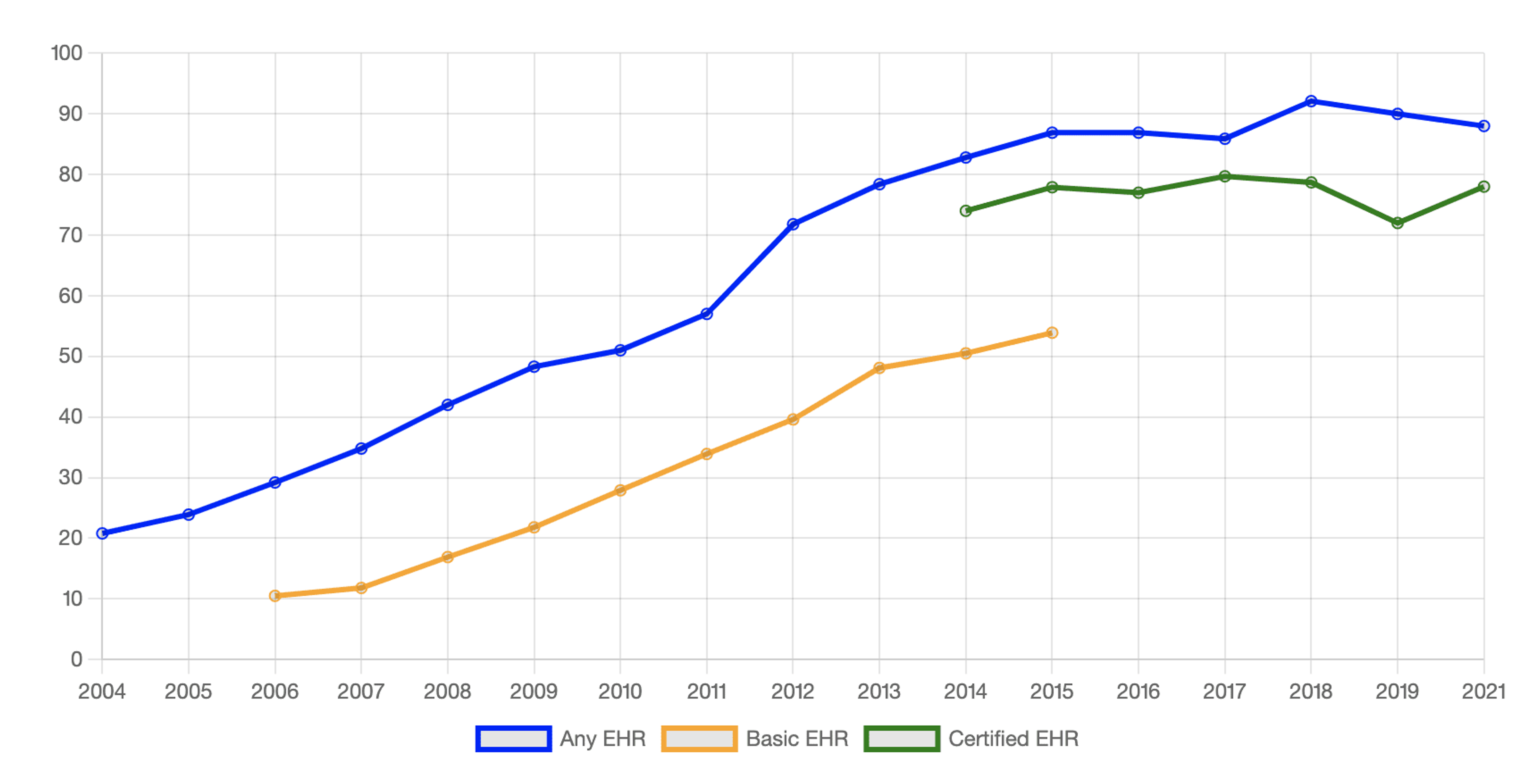blog
What Does It Mean to Deliver Next-Gen Value for Biotechs?

SECTIONS
Single source of truth (SSoT) data managementOpens in a new tab is rapidly becoming a top priority for healthcare organizations. Today, the healthcare industry accounts for 30%Opens in a new tab of the staggering 3.5 quintillionOpens in a new tab bytes of data generated, captured, and stored every day around the globe.
With year-over-year digital data growing faster in healthcare than in other data-rich industries such as finance and manufacturing, implementing effective data management practices and technologies will only become more challenging over the next few years.
While the global healthcare data storage market is on pace to more than double in fewer than seven years – growing from $3,291 millionOpens in a new tab at the end of Q4 2021 to $7,149 million in 2028 – enhanced storage services and capacity only address one plane of the multifaceted data management challenges currently looming in the healthcare industry.
As sources of data – both from an expanding numberOpens in a new tab of software-as-a-service (SaaS) applications and from data recorded by patient wearable devices – continue to proliferate, organizations must dedicate more time and resources to data quality and integration. Healthcare IT staff already spend about 43%Opens in a new tab of their time extracting and harmonizing data from partitioned IT systems.
Going forward, healthcare organizations require a holistic rethinking of data management focusing on establishing a central authoritative hub for data across disparate systems.
In this guide, you’ll learn what the master data management concept of an SSoT is and how healthcare organizations can apply it to today’s urgent data management challenges.
Key Takeaways:
- A single source of truth (SSoT) is a centralized, authoritative data hub within a larger network of contributing data sources.
- The SSoT approach provides many solutions to the increasing challenges of complexity and scale in healthcare data management.
- Coperor by Gaine offers healthcare organizations an industry-first master data management platform for establishing an SSoT in diverse data environments.
What Is an SSoT in Data Management?
SSoT is a master data management concept referring to a single, authoritative data source within a larger network of contributing sources. As organizations grow, they accumulate applications that create and store data in different databases and data warehouses. Large organizations now use an average of 110Opens in a new tab different SaaS applications in day-to-day operations.
Much of the data organizations capture in different applications overlaps. For example, instances of customer data stored in systems used by different branches of an organization – such as sales, marketing, and accounting – contain many identical fields for customers or clients.
Commonly duplicated data fields include:
- Names
- Addresses
- Phone numbers
- Emails
- Transaction histories
In large networks of systems that require manual data entry at multiple points, inconsistencies between data sets accrue over time. These discrepancies result in duplicate, missing, or incomplete records, which skew data analytical processes and negatively influence decision-making.

When data discrepancies occur, data analysts and applications need an authoritative or reference data set to resolve conflicting records. Creating a master reference data set requires integrating systems with a central database application, which aggregates data from all contributing sources. This data set is an organization’s SSoT.
In this sense, establishing an SSoT for data management involves both practices and technology.
- Practices: To integrate disparate applications and IT systems, organizations must choose data formatting and validation standards and define data workflows and hierarchies between systems. Data scientists call this set of practices data governance.
- Technology: Organizations handling large volumes of data cannot construct an SSoT by manually manipulating individual data discrepancies. They require data management tools with capabilities for both machine learning and highly customizable parameters to distinguish duplicates from nearly-matching, unique records.
Common Healthcare Data Management Challenges an SSoT Can Solve
SSoT has many applications in diverse fields. In the healthcare field, challenges an SSoT can address include the following.
1. Digitalization

Over the past 15 years, U.S. physicians’ adoption of electronic health records (EHRs) rose from approximately 40% to 90%Opens in a new tab. While the digitalization of patient data at the point of care has reduced many kinds of medical and prescription errorsOpens in a new tab, most EHR systems lack common standards for integration across organizations.
Organizations that can integrate non-uniform data such as different kinds of EHRs stand to gain the most – both in patient care and operational efficiency – from this growing trove of new data.
2. Leveraging Predictive Data Analytics
Practical applications for predictive analytics in healthcare are on the rise. Organizations that can accurately capture and access a wide variety of patient and operational data make more informed choices and allocate limited resources more effectively.
For example, when patients miss appointments or fail to adhere to care providers’ instructions, the resulting rescheduled appointments and avoidable return visits decrease care providers’ availability to other patients in need.
Recent developmentsOpens in a new tab in predictive analytics have helped organizations use existing records to identify patients with a high risk for missing appointments or incorrectly following homecare instructions. Organizations that use this data to determine the frequency of reminders and follow-up contacts with patients can greatly increase patient engagement and reduce the drain on care providers’ time.
Having access to a comprehensive SSoT with high data integrity improves the success rate of predictive analytics and the decision-making processes they drive in resource allocation and care determination.
3. Maintaining Compliance
The 2020 Interoperability and Patient Access final ruleOpens in a new tab (CMS-9115-F) passed by the Centers for Medicare & Medicaid Services (CMS) requires healthcare organizations to implement interoperability standards that allow patients free access to their own health data.
Although full enforcement of the rule remains postponed, the CMS is currently using healthcare organization feedback on the rule to shape future policy on a national centralized data hub for patient data. Organizations that invest early in SSoT data management solutions can mitigate the burden of compliance after-the-fact when finalized regulations go into effect.
Establish a Single Source of Truth with Coperor by Gaine
Gaine offers healthcare organizations industry-first master data management solutions in the Coperor platform. Designed to integrate data across complex organizations and their contracted partners, Coperor enables comprehensive SSoT data management for the unique needs of the healthcare industry.
Schedule a live demo of the Coperor Platform by Gaine today.
